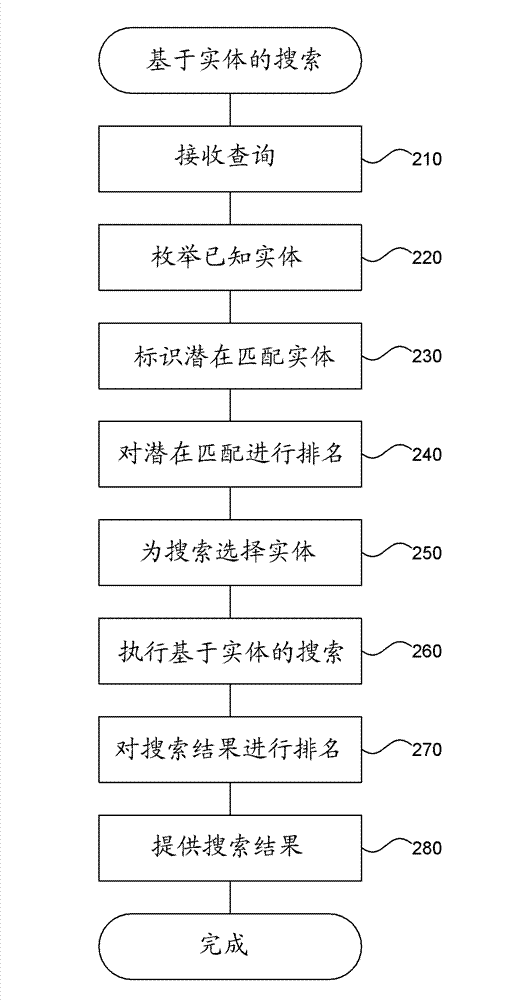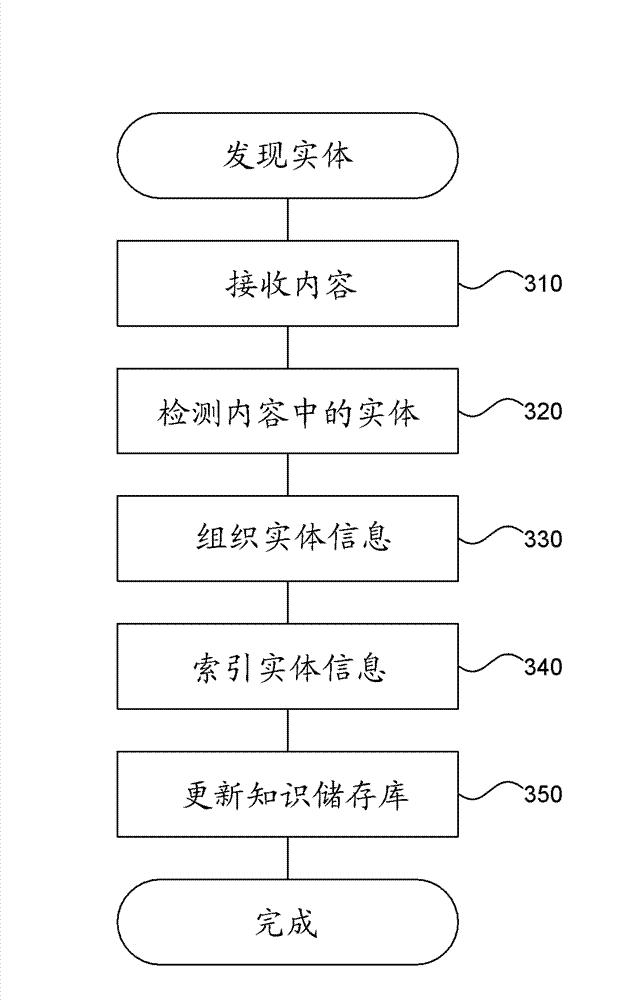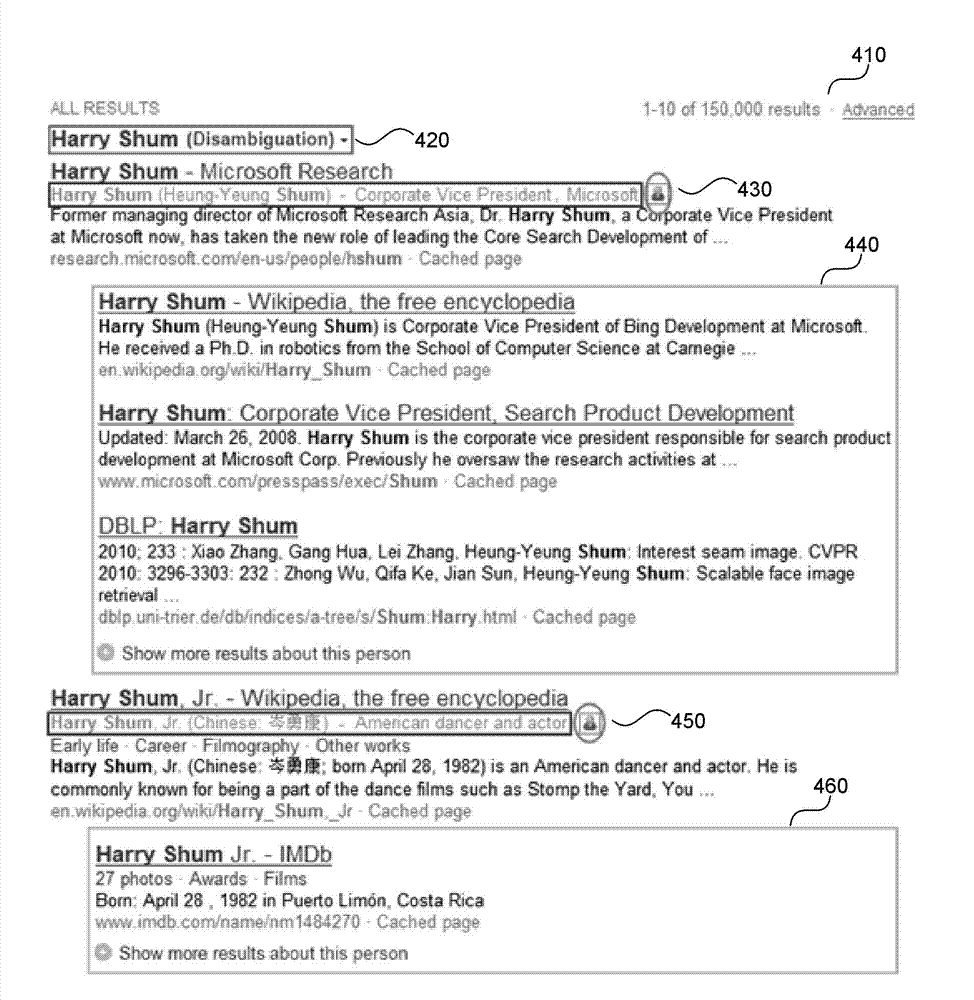Knowledge-based entity detection and disambiguation
An entity and knowledge technology, applied in the direction of network data retrieval, other database retrieval, instruments, etc., can solve problems such as hindering the organization of search results, unclear users, etc.
- Summary
- Abstract
- Description
- Claims
- Application Information
AI Technical Summary
Problems solved by technology
Method used
Image
Examples
Embodiment Construction
[0010] Described herein is an entity-based search system that detects and identifies entities in Internet-based content and uses this identification to organize search results. One goal of entity detection and disambiguation is to label named entities in web pages (or other types of text data) with distinguishable identifiers that unambiguously identify the entities. The system associates one or more entity identifiers with a web page and stores this information as metadata for the page in a search engine index. This metadata will enable entity-based queries and rich data presentation in search engine results pages (SERPs), including: grouping results by entity; filtering results by one or more specific entities; or User preferences for reranking search results.
[0011] In some embodiments, an entity-based search system includes four high-level components: 1) a knowledge repository, which stores a large collection of known entities; 2) a named entity detector, which detects ...
PUM
 Login to View More
Login to View More Abstract
Description
Claims
Application Information
 Login to View More
Login to View More - R&D
- Intellectual Property
- Life Sciences
- Materials
- Tech Scout
- Unparalleled Data Quality
- Higher Quality Content
- 60% Fewer Hallucinations
Browse by: Latest US Patents, China's latest patents, Technical Efficacy Thesaurus, Application Domain, Technology Topic, Popular Technical Reports.
© 2025 PatSnap. All rights reserved.Legal|Privacy policy|Modern Slavery Act Transparency Statement|Sitemap|About US| Contact US: help@patsnap.com



